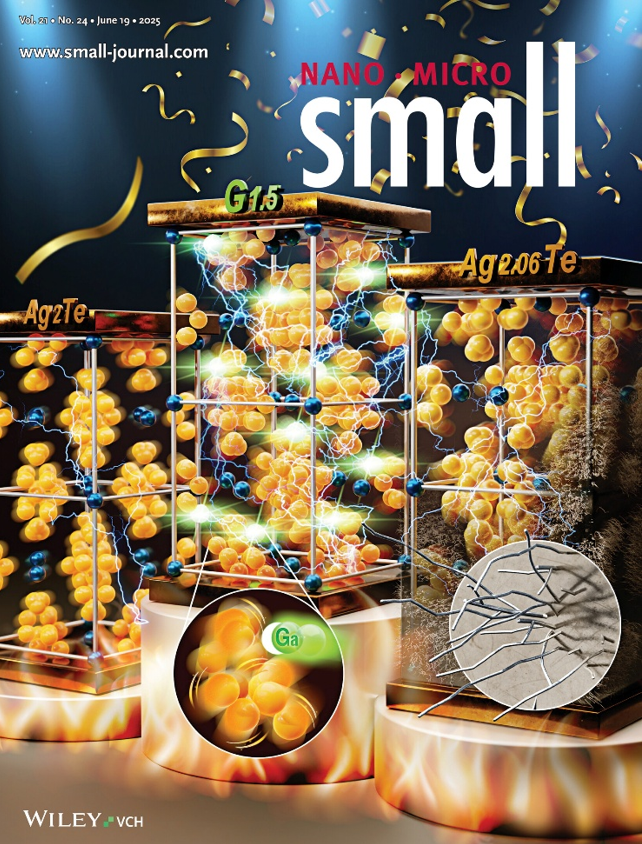Prof. Hsin-Jay Wu's Team Featured on Small Cover for Research on Enhancing Thermoelectric Performance and Structural Stability of Silver Chalcogenides by Tuning Solid Solubility
2025/7/1
Silver-based chalcogenide materials exhibit excellent electronic transport properties, making them highly attractive in solid-state materials research. However, their structural instability at elevated temperatures limits practical applications. In particular, Ag₂Te tends to form silver whiskers after phase transition, which can short-circuit electronic components, significantly reducing device lifespan and energy conversion efficiency. To address this issue, Professor Hsin-Jay Wu’s team adopted a strategy of tuning solubility to suppress whisker formation and enhance thermoelectric performance. The study, led by PhD student Yun-Han HUANG-LU, involved minor gallium (Ga) doping into Ag₂.₀₆Te to form a stable (Ag,Ga) solid solution. This substitution effectively replaces the high-mobility Ag phase while optimizing carrier concentration and enhancing defect scattering. As a result, the average figure of merit (zT) from room temperature to 623 K was improved by 131%, and the thermoelectric conversion efficiency reached 2.3%. The Ga-Ag₂.₀₆Te thermoelectric module also maintained stability with no significant silver whisker formation after prolonged high-temperature operation. This work demonstrates that materials with liquid-like characteristics hold great promise as high-performance thermoelectric materials.
Contact Information:
Prof. Hsin-Jay WU
hjwu0211@ntu.edu.tw

Cover picture

Scanning electron microscopy (SEM) images showcasing the morphological characteristics of silver whiskers. (a) and (b) present SEM images depicting the intricate structures of silver whiskers at different magnifications. (c-e) Colored SEM images of the Ag2.06Te alloy, with the Ag2Te phase colored green and the Ag phase pink.

The G1.5 sample single-leg conversion efficiency measurement result. (a) conversion efficiency 𝜂 of Ag2.06Te and G1.5 single leg as the function of ΔT (b) photograph of G1.5 sample before and after 523 K heating, (c) photograph of Ag2.06Te sample before and after 523 K heating.